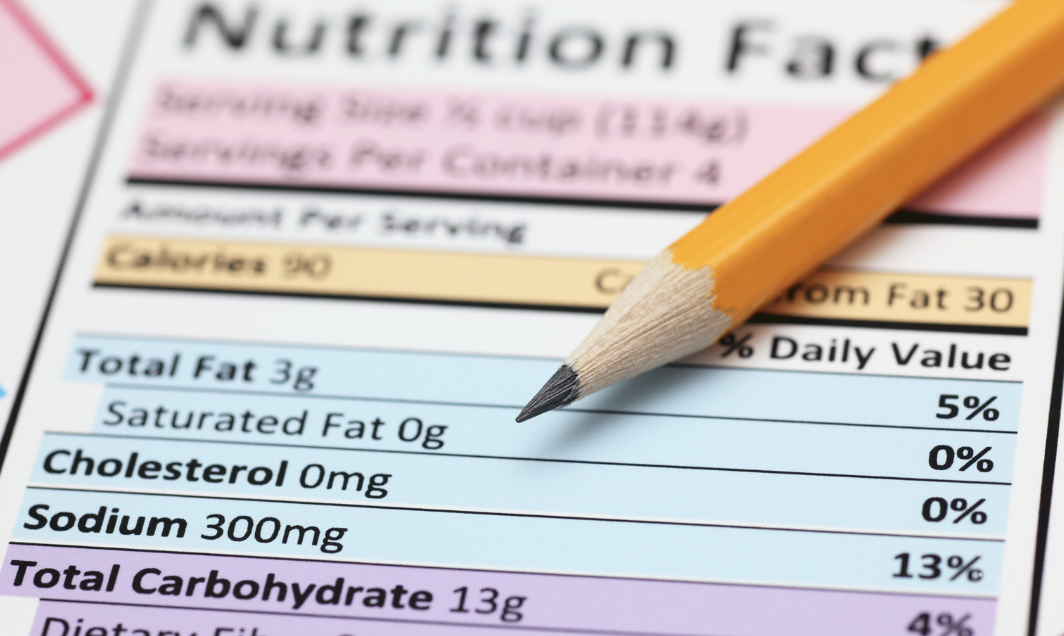
Your 101 Guide to Understanding the Nutrition Facts Label in Order to Reach Your Health Goals
Have you ever thought to yourself how to read a nutrition label? The nutrition facts label can be a helpful ...
Have you ever thought to yourself how to read a nutrition label? The nutrition facts label can be a helpful aid in reaching your health goals. But it’s easy to get overwhelmed and confused by all the information! Continue reading if you want to better understand how to evaluate any nutrition facts label you encounter.
- Read the ingredients list
Most times, the ingredient list is underneath the nutrition facts portion of a label. Ingredients are listed on a weighted basis, from biggest to smallest proportion. For instance, if the first ingredient listed is sugar, that would mean that sugar makes up the largest component of the food item. Typically, the shorter the ingredient list is (meaning less ingredients), the better it is for you.
- Recognize the serving size and servings per container
Be aware of how many calories are contained in one serving of an item and how it relates to the serving size. For example, if you eat double the serving size, you are also doubling the calories and nutrients that you consume. While the serving sizes are suggestions, be cautious of how certain nutrients add up and impact your daily nutritional needs. For instance, the portion size of an item may be smaller than how much you typically consume of the item. Even if a product looks healthy, if you have more than this amount, you may be consuming more calories, sugars, sodium, and saturated fats than you realize.
- Be mindful of certain nutrients
Saturated fats, sodium, and add sugars are all sneaky nutrients that can add up quickly if you’re not mindful.
It’s more than ok and completely normal to eat foods with a high fat content – think avocados, olive oil, etc – but it’s important to be aware of the saturated to unsaturated fat ratio. Too much saturated fat can cause cholesterol buildup which increases the risk of heart disease and stroke. These fats are typically found in dairy products like butter and cheeses as well as pastries and certain meats.
When looking at the sodium content, pay attention to the Daily Value recommendation. The % Daily Value is based on a diet of 2,000 calories per day. Generally, a serving size of food that is 20% DV or more is considered high. Foods that are typically higher in sodium include cured meats, processed foods, canned soups, cheeses, and savory snacks.
For sugars, be mindful of the proportion of sugar to added sugar. Natural sugar is found in whole and unprocessed food like fruits. Added sugars are those added to foods during processing as a way to help with food preserving and flavoring. Foods you may not think contain much sugar can surprise you if you aren’t being mindful. Certain foods that may contain sneaky sugars include peanut butter, yogurt, dried fruit, juices, ketchup, and canned fruit.

- Understand sugar substitutes
Sometimes, food products will be labeled as “sugar free” or “lite” versions of familiar favorites. These products typically contain artificial sweeteners to make up for the lack of sugar. Artificial sweeteners don’t contain calories, sugar, or any beneficial nutrients. Since artificial sweeteners can be 200 to 700 times sweeter than table sugar, they will typically be listed towards the end of the ingredients list since they are needed in much smaller amounts. Typical artificial sweeteners include sucralose, aspartame, saccharin, and neotame. However, just because a product is labeled “lite” or “healthy” doesn’t necessarily mean it will be healthier for you. It is typically recommended to reduce sugar consumed as a whole, rather than simply replacing it for sugar alternatives.
- Look for beneficial nutrients
When reading a nutrition facts label, pay attention to nutrients like fiber, protein, calcium, iron, potassium, and vitamin D. Many of these nutrients can be lacking in our typical daily consumption if we aren’t mindful. For instance, protein helps with fullness and satiation levels and can even prevent overeating. Dietary fiber helps with weight management and reducing blood cholesterol levels. Foods higher in potassium, vitamin D, calcium, and iron are important in order to reduce the risk of certain health problems and help maintain overall good health.
The nutrition facts label is an important aid in making healthier eating choices to make reaching your health goals easier than ever. Having a basic understanding of how to read and evaluate the label can make grocery shopping an easier process too!

Hi lady! I’m a Registered Dietician Nutritionist and metabolism expert with over 8 years of experience helping women fix their metabolism, feel more confident in their body, and feel better than ever. I’ve worked with 100s of women to help them to make reaching their nutrition goals doable and simple using my unique 3-phased approach that focuses on mindset, mindfulness, and metabolism.
You can learn more about my high-touch, personalized coaching program and how it can change your life forever here.
Are you tired of endless diets and gimmicks that promise quick results but fail to deliver? If you’re ready to embrace a sustainable approach to weight loss, one that doesn’t involve restrictive eating or relying on magic weight loss pills, then look no further.
Watch my program video here where you’ll discover the secrets to shedding pounds for good while nourishing your body and mind.
This program is for you if you’re ready to say goodbye to the cycle of temporary fixes and hello to a lifetime of feeling and looking your absolute best. It’s time to take control of your health and well-being.
Take control of your health and weight loss goals now.
** This article was written by Ava Stover, nutrition intern. Fact checked by Allison Tallman RD.


